A ball of mass m kept at the corner as shown in the figure, is acted by a horizontal force F. The correct free body diagram of ball is
 Solution in Gujrati
Solution in Gujrati
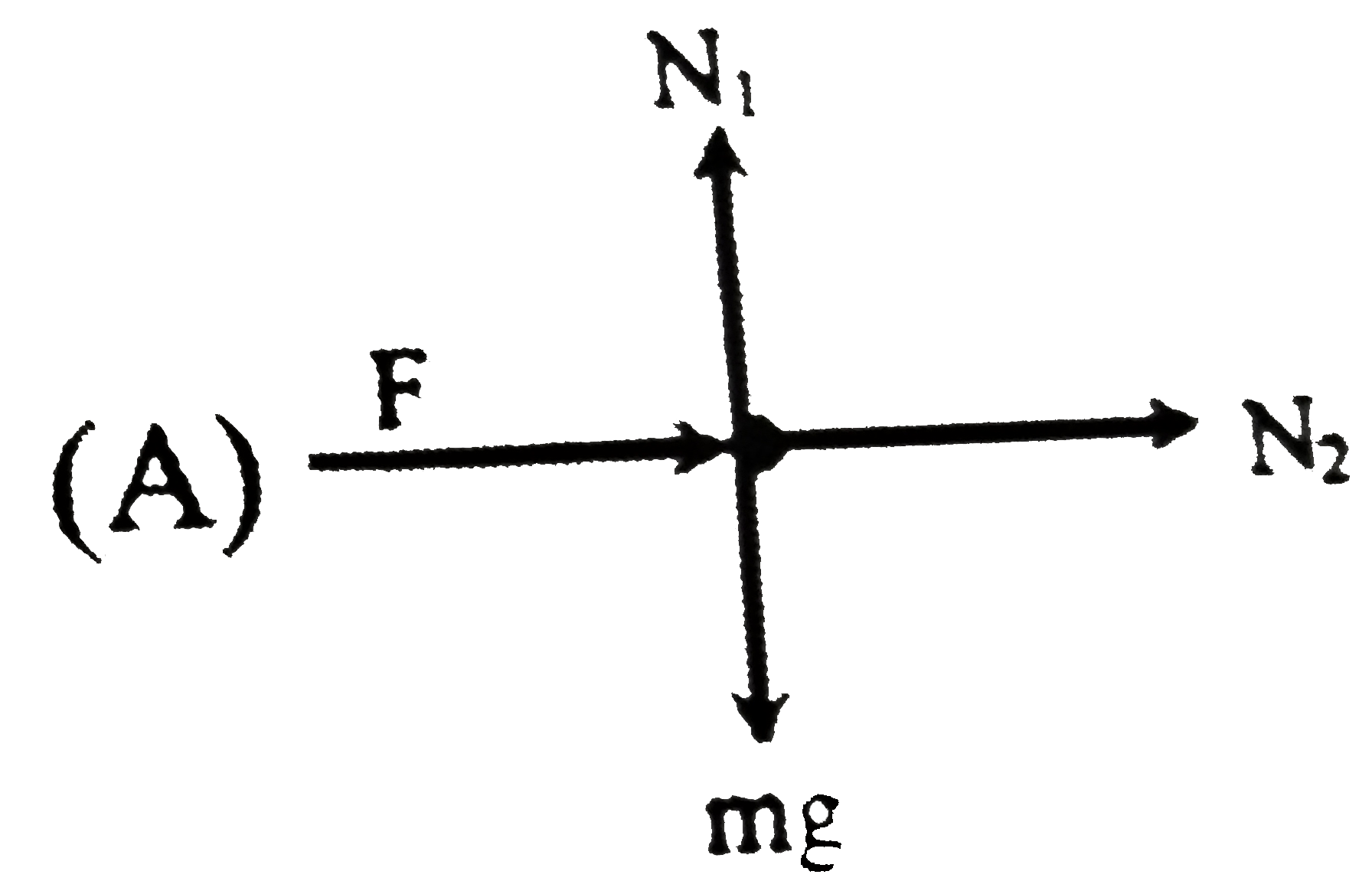
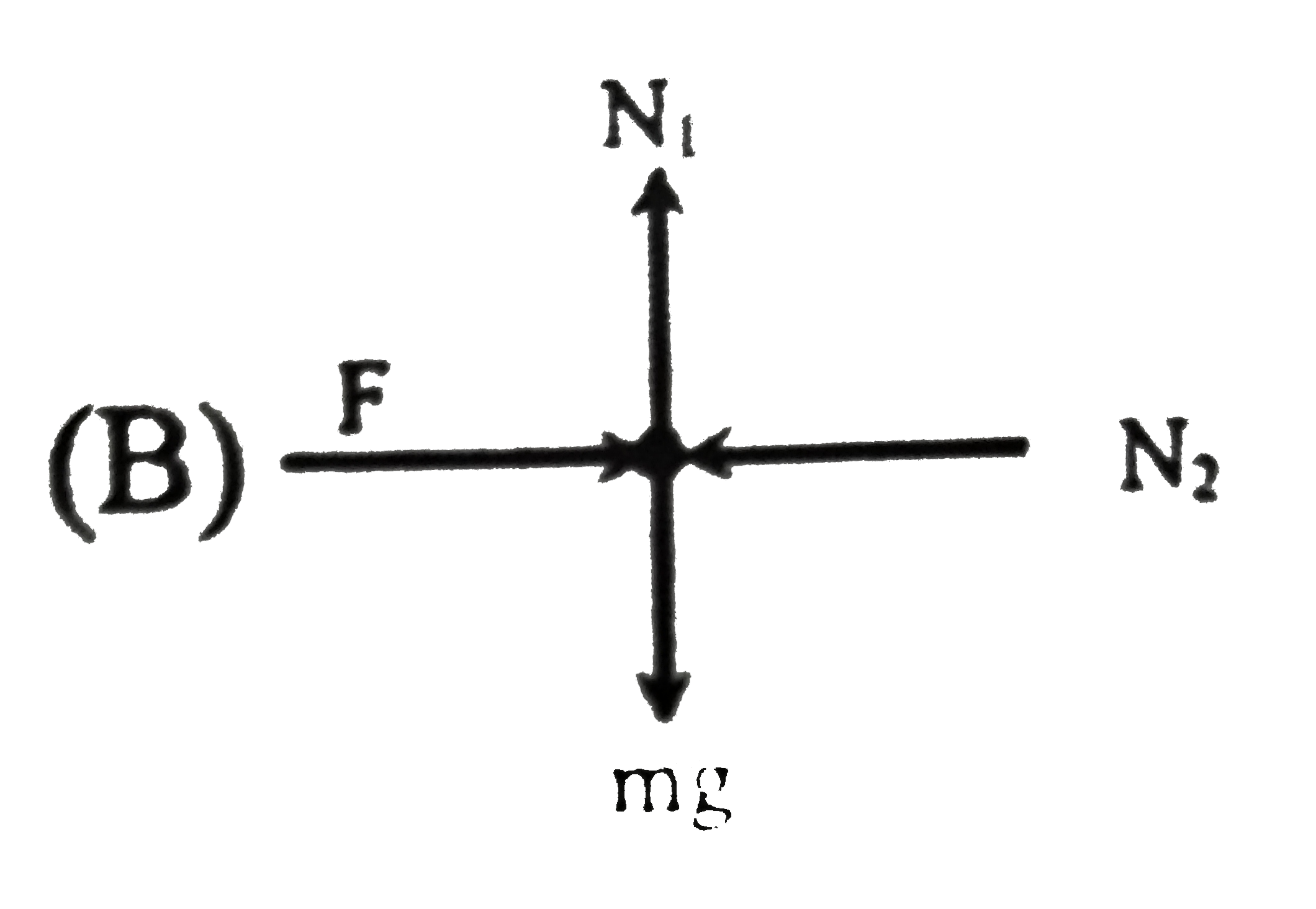
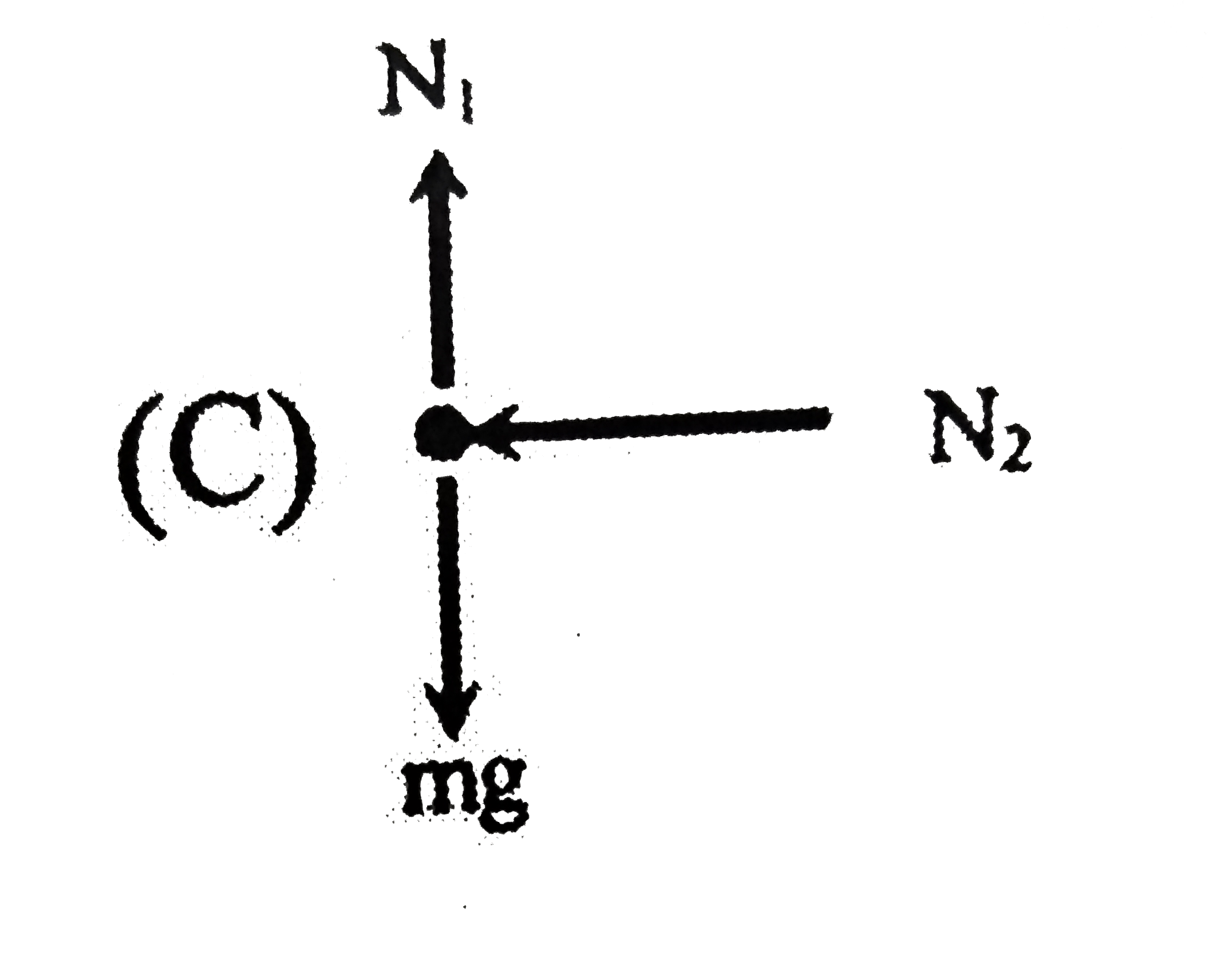
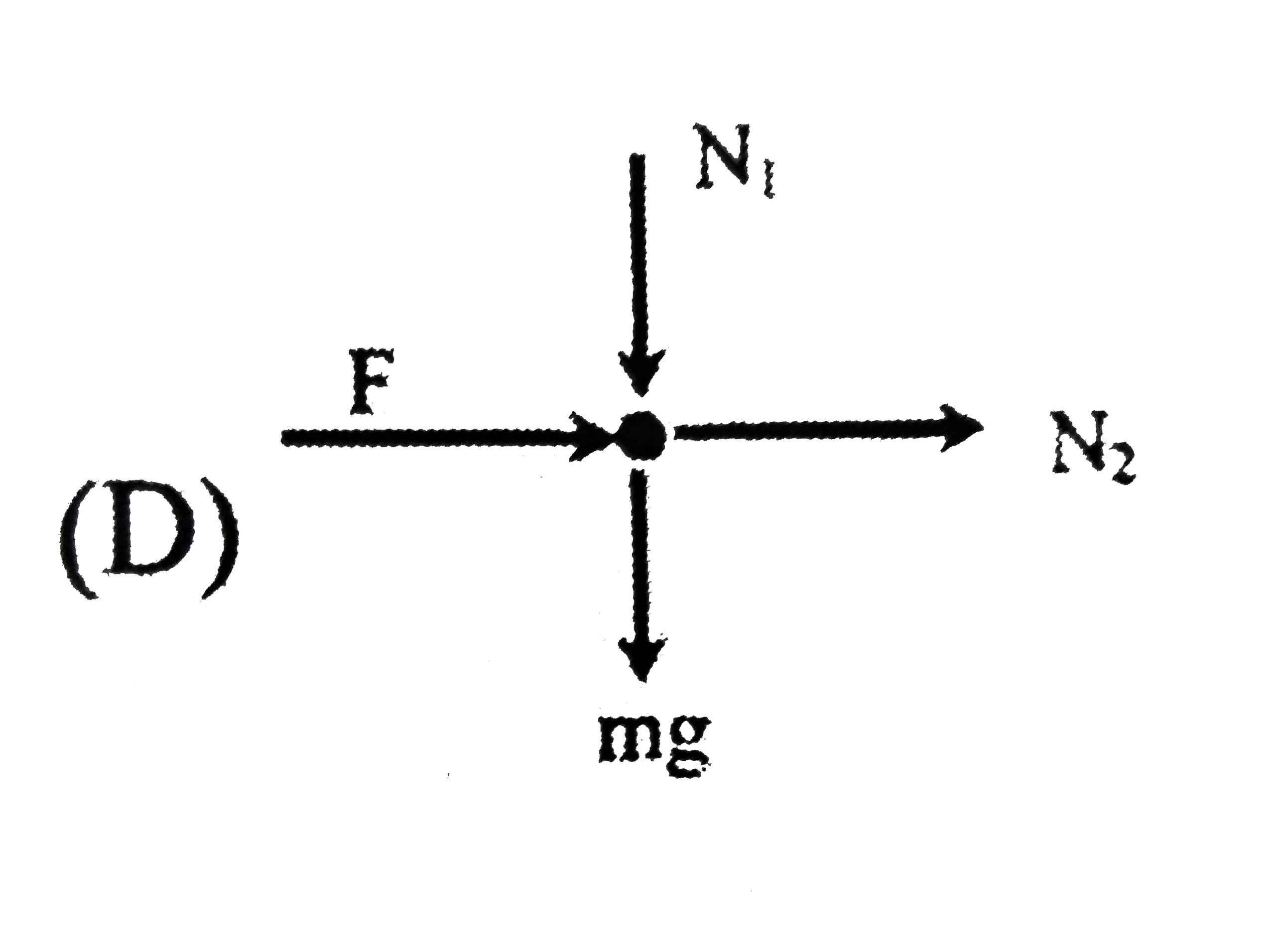
The correct Answer is:B
Step by step video & image solution for A ball of mass m kept at the corner as shown in the figure, is acted by a horizontal force F. The correct free body diagram of ball is by Physics experts to help you in doubts & scoring excellent marks in Class 12 exams.
Updated on:21/07/2023Topper's Solved these Questions
- NEWTON'S LAWS OF MOTION & FRICTIONBook:ALLEN Chapter:NEWTON'S LAWS OF MOTION & FRICTIONExercise:EXERCISE (O-2)
Explore 31 Videos
- NEWTON'S LAWS OF MOTION & FRICTIONBook:ALLEN Chapter:NEWTON'S LAWS OF MOTION & FRICTIONExercise:EXERCISE (JM)
Explore 6 Videos
- NEWTON'S LAWS OF MOTION & FRICTIONBook:ALLEN Chapter:NEWTON'S LAWS OF MOTION & FRICTIONExercise:EXERCISE (S-2)
Explore 9 Videos
- MOTION IN A PALNEBook:ALLEN Chapter:MOTION IN A PALNEExercise:SOLVED EXAMPLE
Explore 28 Videos
- NEWTONS LAWS OF MOTIONBook:ALLEN Chapter:NEWTONS LAWS OF MOTIONExercise:EXERCISE-III
Explore 28 Videos
Similar Questions
Two monkey of masses 10 kg and 8 kg are moving along a verticle rope as shown in fig. the former climbing up with an acceleration of 2ms−2, while the later coming down with a uniform velocity of 2ms−1. Find the tension in the rope at the fixed support.
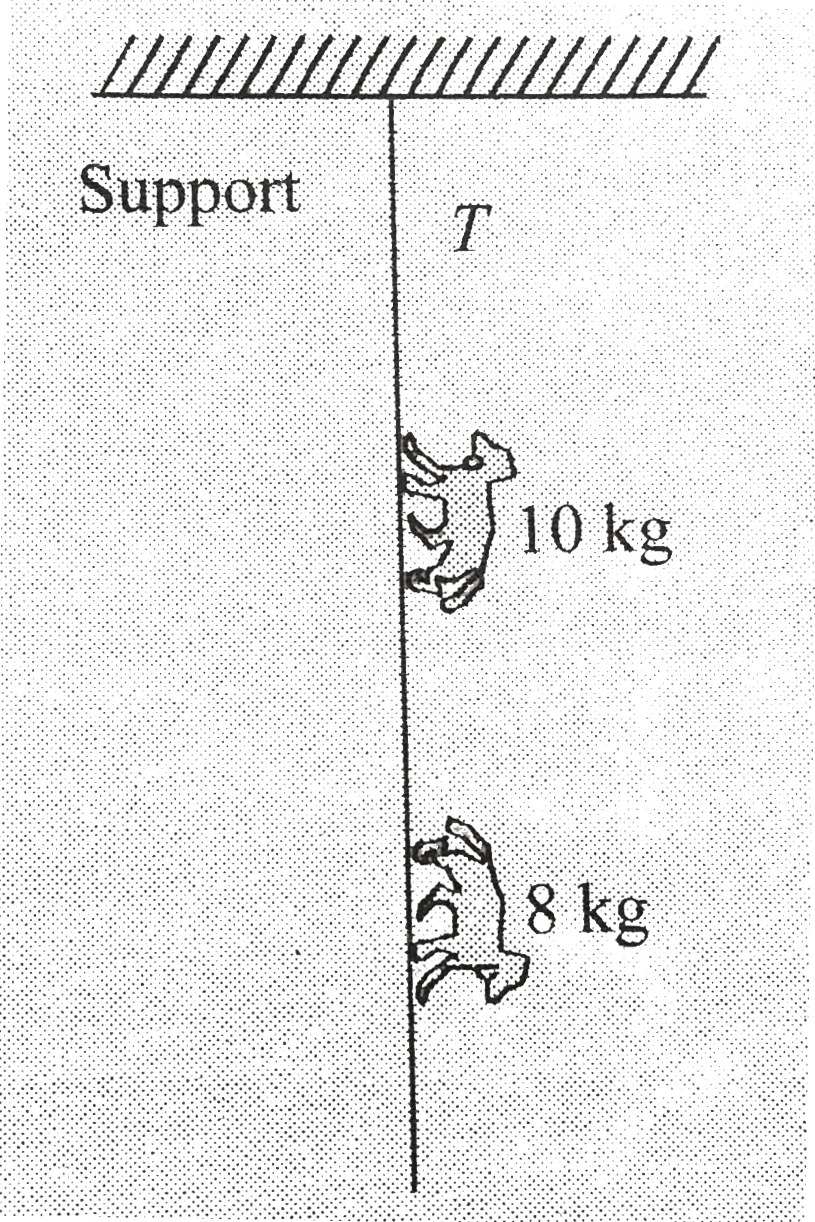
View SolutionTwo fixed frictionless inclined planes making an angle 30∘ and 60∘ with the vertical are shown in figure. Two blocks A and B are planes. What is the relative vertical acceleration of A with respect to B?
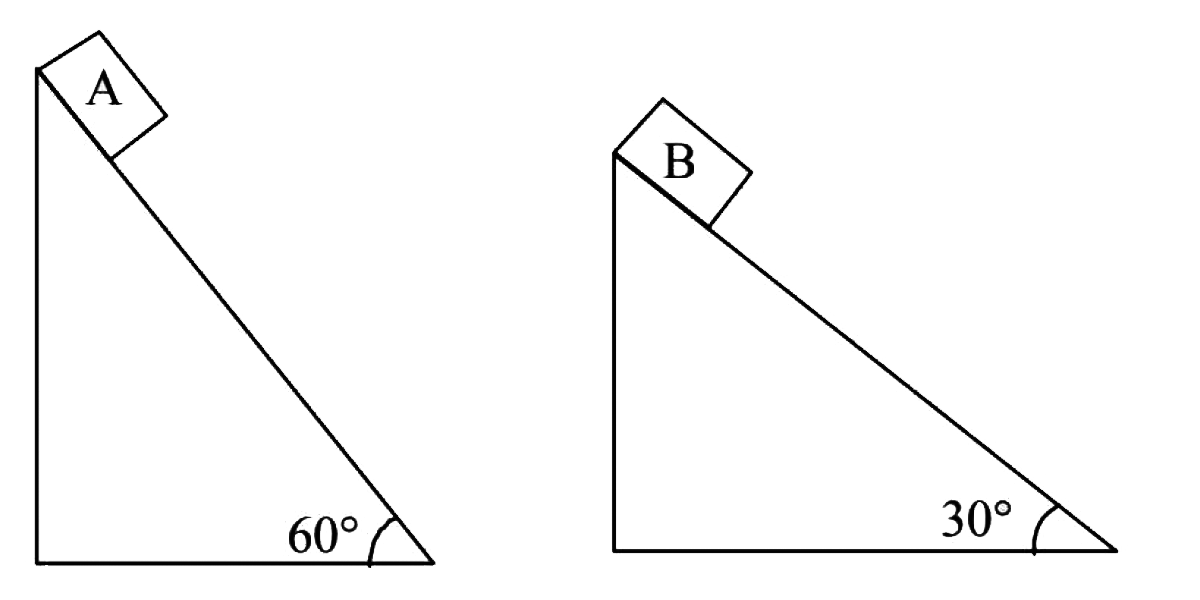
View SolutionA ladder is hanging from ceiling as shownin figure. Three men A, B and C of masses 40 kg, 60 kg, and 50 kg are climbing the ladder. Man A is going up with retardation 2m/s2, C is going up with an acceleration of 1m/s2 and man B is going up with a constantg speed of 0.5 m/s. Find the tension in the string supporting the ledder. [g=9.8m/s2]
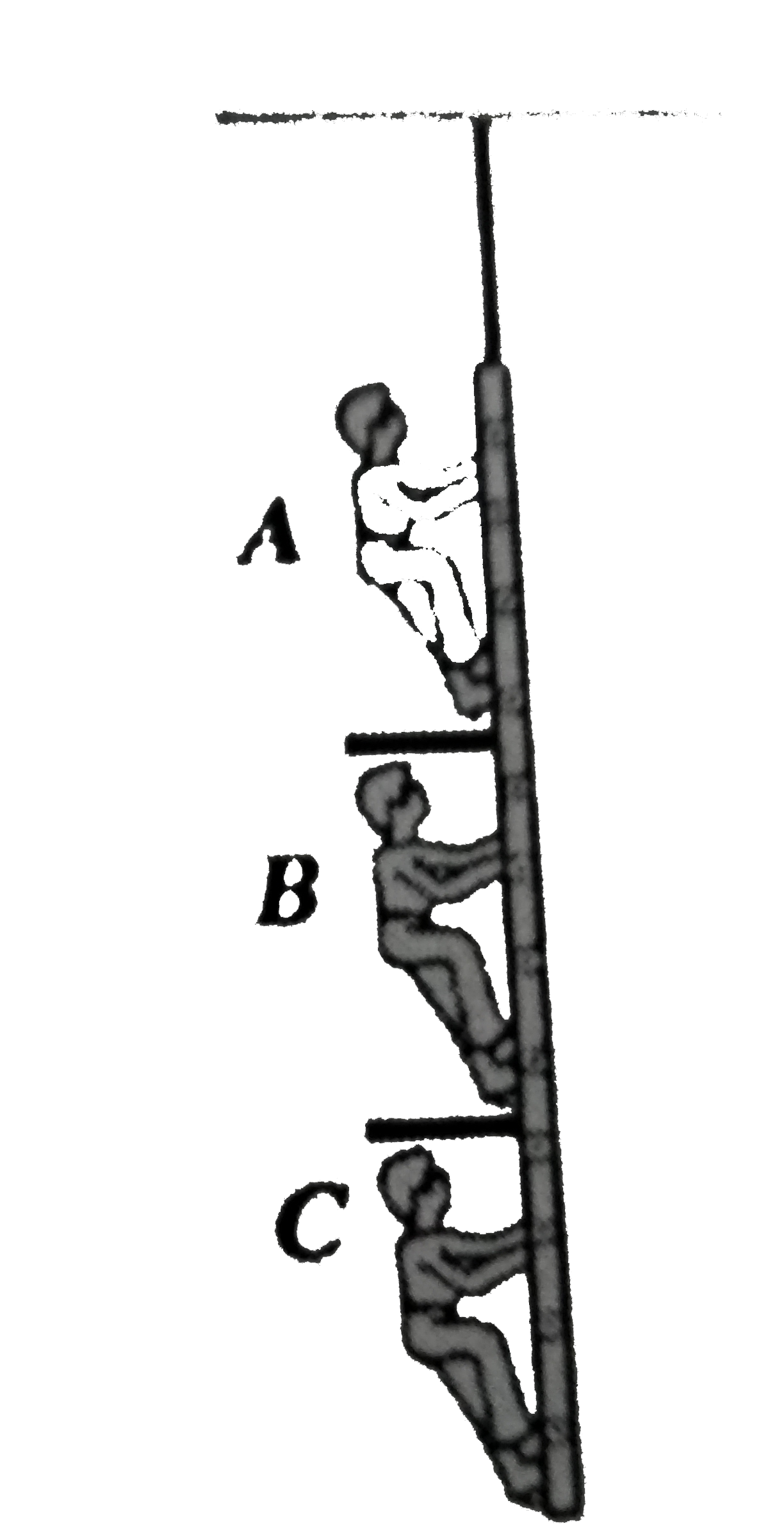
View SolutionA particle thrown over a triangle from one end of a horizontal base falls on the other end of the base after grazing the vertex. If αandβ are the base angles of triangle and angle of projection is θ, then prove that (tanθ=tanα+tanβ)
View SolutionAssertion: The driver in a vechicle moving with a constant speed on a straight road is in a non-inertial frame of referance.
Reason: A reference frame in which Newton's laws of motion are applicable is non-inertial.
View SolutionA wedge of mass M resting on a horizontal frictionless surface is acted upon by a force F in the horizontal direction as shown in figure. Find the net horizontal force acting on the shaded portion of the wedge.
View SolutionA stick of length L and mass M lies on a frictionless horizontal surface on which it is free to move in any way. A ball of mass m moving with speed v collides elastically with the stick as shown in the figure. If after the collision the ball comes to rest, then what would be the mass of the ball?
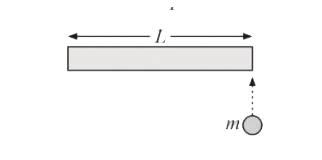
View SolutionA sphercial ball of mass 5kg is resting on a plane with angle of inclination 30^(@) with respect to the horizontal as shown in the figure. The ball is held in place by a rope attached horizontally to the top of the ball and to the slope. The frictional force acting on the ball is
View SolutionWhen a force F acts on a body of mass m, the acceleration produced in the body is a. If three equal forces F_(1) = F_(2)=F_(3)=F act on the same body as shown in figure the acceleration produced is
View SolutionIn the given figure, the wedge is acted upon by a constant horizontal force F. The wedge is moving on a smooth horizontal surface. A ball of mass 'm' is at rest relative to the wedge. The ratio of forces exerted on 'm' by the wedge when F is acting, and when F is withdrawn, assuming no friction between the wedge and the ball, the ratio is equal to
View SolutionIn the given figure, the wedge is acted upon by a constant horizontal force 'F'. The wedge is moving on a smooth horizontal surface. A ball of mass 'm' is at rest relative to the wedge. The ratio of forces exerted on 'm' by the wedge when 'F' is acting and 'F' is withdrawn assuming no friction between the edge and the ball, is equal to :
View SolutionA ball of mass 'm' is thrown with a speed v0 towards a bat. It rebounds along the same speed 2v0 . The variation of interaction force between the bat and ball is shown
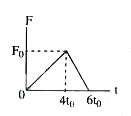
The speed of the ball at the instant the force acting on the ball is maximum is
View SolutionA ball of mass m= 1 kg falling vertically with a velocity v_(0) = 2 m/s strikes a wedge of mass M = 2 kg kept on a smooth, horizontal surface as shown in figure The coefficient of restitution between the ball and the wedge is e = (1)/(2). Find the velocity of the wedge and the ball immediately after collision.
View SolutionA stick of length L and mass M lies on a frictionless horizontal surface on which it is free to move in any way. A ball of mass m moving with speed v collides elastically with the stick as shown in the figure. If after the collision the ball comes to rest, then what would be the mass of the ball?

View SolutionWhen a force F acts on a body of mass m the acceleration product in the body is a . If three equal forces F_(1)=F_(2)=F_(3)=F act on the same body as shown in figure the acceleration produced is
View SolutionA stick of length L and mass M lies on a frictionless horizontal surface on which it is free to move in any way. A ball of mass m moving with speed v collides elastically with the stick as shown in the figure. If after the collision the ball comes to rest, then what would be the mass of the ball?
View Solution